| 1 | Coachwhip |
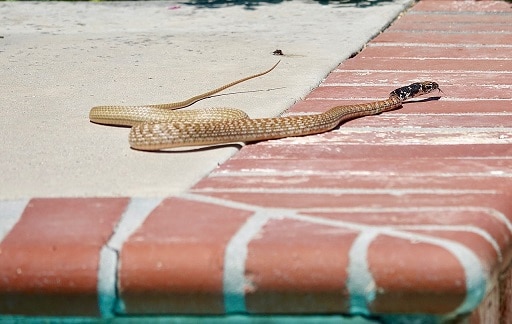
A snake of the entire southern US, from Florida in the east to California in the west. This species is infamously resistant to hot weather, and can be found patrolling dusty plains, semi-deserts, wooden porches, and dry cattle fields at temperatures far beyond comfortable.
Coachwhips inhabit warm to hot realms, and they move by day. This species is non-venomous though with an aggressive bite, and is exclusively diurnal, with nocturnal movements being very rare. As you wipe the sweat off your forehead, savouring the last insignificant drops of your water bottle, this is a likely snake to see slithering calmly past with no concern at all.
The coachwhip’s resistance to hot weather is purely strategical. Over 60% of their diet comes from lizards, such as Texas horned lizards. Specifically, they search for lizards dashing quickly between cacti and rocks by day, unlike other snakes, which seek out sleeping lizards in their dens at night. Lizards generally cope with more extreme heat than snakes, giving coachwhips a strong evolutionary incentive to withstand scorching days themselves. Coachwhips are especially reliant on eyesight as hunters. A scaly tail disappearing behind a creosote bush is all they need to get excited.
| 2 | Coin-marked snake |
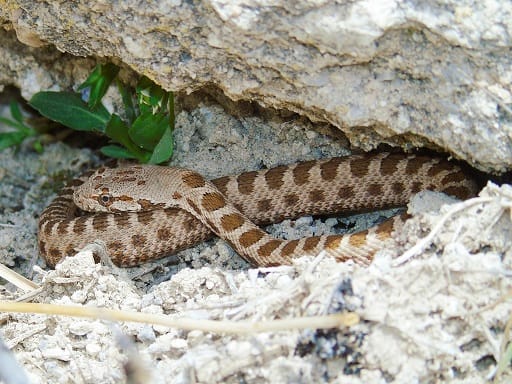
One of the most common non-venomous snakes of Israel. This is a species of Mediterranean shrubland and olive groves, which peaks at 100cm.
Coin-marked snakes are slow-moving compared to coachwhips, but are similar in their diurnal nature, and resistance to extreme temperatures in which other snakes flee. Even on the hottest days, when Israeli citizens are hiding indoors and counting the hours still the sun sets, coin-marked snakes prowl along steadily like a tortoise, searching olive groves for small rodents. With their lack of offensive weapons, heat resistance is one of their greatest advantages.
Compared to their Israeli neighbours, coin-marked snakes are most faithful to daytime no matter the cost. Palestinian vipers are nocturnal, as are Field’s horned vipers. Both vanish into dark burrows to avoid the hot temperatures. Diadem snakes are diurnal, but become nocturnal during summer, as they literally can’t take the heat. Coin-marked snakes might become crepuscular during burning temperatures, AKA active during dawn and dusk, but no more. Coin-marked snakes also have the ability to triangulate their heads at will, to mimic the nearby Palestinian viper.
| 3 | Moila |
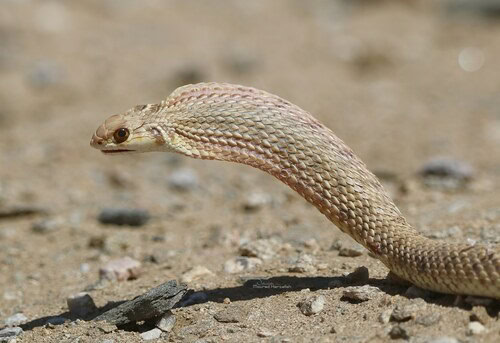
The moila is a relatively unusual snake on the evolutionary tree, as their only close relatives are the Montpellier snakes of Europe. They’ve evolved unusual abilities such as flaring a neck hood to mimic the Egyptian cobra, and rubbing a strange waxy secretion into their scales using their nose.
Moilas average at 60-80cm, and also possess the ability of high heat resistance. They’re a diurnal or day-faring snake, and this is no laughing matter in the hazy deserts of Ethiopia or Morocco. Any snake which misjudges its core body temperature can fall victim to the one thing snakes fear above all: going crispy.
This doesn’t seem to be a problem for moilas. They can stride through rocky canyons, dry grazing fields and stony semi-deserts long after other snakes have given up. Moilas are moderately venomous, though with an unresearched chemical profile. They’re a very widespread species, ranging from Mauritania in the far west to Iran in the far east. Their superior physiology may have something to do with this. If you and your camel are staggering across a dune searching for an oasis, and you see a moila reared up proudly above, it’s you who has the disadvantage, not the snake.
| 4 | Yellow-faced whipsnake |
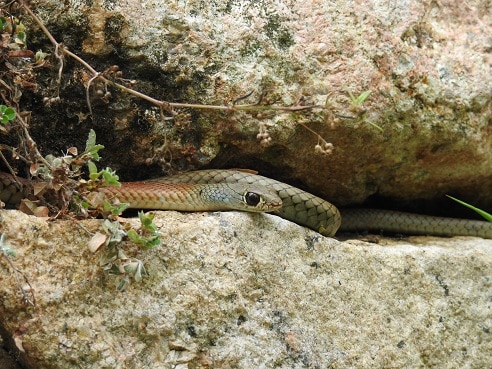
It’s a crowded market in Australia, and the yellow-faced whipsnake falls short in several ways. Their venom can cause swelling, but is dramatically weaker than tiger snakes or brown snakes. There’s a few neurotoxins which fail to progress to full scale paralysis. But yellow-faced whipsnakes are the undisputed champion of Australia when it comes to heat resistance, the ability to slither through scorching climates without fleeing underground.
A 2003 study compared them to 3 Australian neighbours: the marsh snake, golden-crowned snake, and small-eyed snake. The latter two were fully nocturnal, the marsh snake a mixture. Meanwhile, yellow-faced whipsnakes moved mainly from 10:00-15:00, not even resting during peak sunlight.
They were also active at by far the highest body temperatures: 31.3-33.2C. The other 3 were active at body temperatures of 18.1-23.4C. Yellow-faced whipsnakes are fast-moving and have a high metabolism, both of which have a correlation with temperature resistance. You’ll find this species on the east coast, in roasting shrubland, town alleyways, grassland and swimming pools alike.
| 5 | Paraguay green racer |
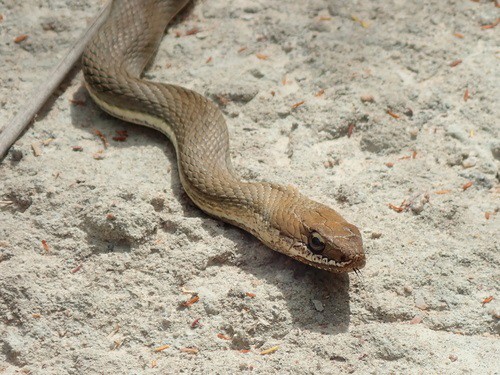
Paraguay green racers (Philodryas nattereri) are the dominant maniac snake of eastern Brazil, inhabiting the dry Caatinga region, with only a slight foothold in Paraguay. Their daily exploits include climbing rooftops, plucking birds from precarious nests, and getting beaten to death by 30-member capuchin monkey troops wielding fallen tree branches. Paraguay green racers have only a mild venom, but are one of South America’s most heat-resistant snakes.
This snake is purely diurnal, as a 2011 study found that they moved exclusively from 07:00 to 16:59. They favoured the hottest hours of the day: 11:00-12:59. Paraguay green racers cannot be bothered to take a siesta. Maybe they attempt to for 5 minutes, before their gnat-like attention span gets distracted by a scaly lizard in the distance, and off they go again.
Philodryas nattereri also favours open ground, which makes their heat resistance all the more impressive. They inhabit swaying tree clumps, but also open cerrado grassland and dirt roads (roadkill is a common fate for them). Similarly to a coachwhip, lizards form 60-70% of their diet, including Peter’s lava lizards and whip-tailed lizards. Lizards favour high heat, and to successfully lunge and grab them, the Paraguay green racer has evolved to be similar.
| 6 | Cape cobra |
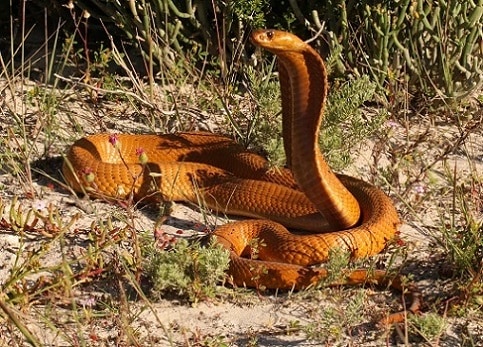
A neurotoxic snake of southern Africa which causes many deaths annually. This species varies from yellow to red, and prefers open shrubland and grassland, avoiding dense forests.
Cape cobras are one of the most heat-resistant of any venomous snake, outside of actual sand dune surfers like sidewinders. The sun barely suppresses them; in fact, it seems to make them more energetic. Cape cobras can be found prowling the savannah in temperatures where a rock python would shrivel up and go crispy. Sun-drenched savannahs have been the site of many of their famous battles, from mongooses to honey badgers, battles they sometimes lose.
The story doesn’t change with human encounters. Cape cobras are more than willing to lunge and envenomate on the hottest days. Luckily, their active, diurnal nature means that you’ll probably see them coming. Cape cobras don’t care about the beating sun one bit, and will slither around purposefully at mid-day when other snakes are hiding. When they do need to cool off slightly, cape cobras will slither into dark mammal burrows, sometimes eating the occupants (which sometimes escape).
| 7 | Karoo sand snake |
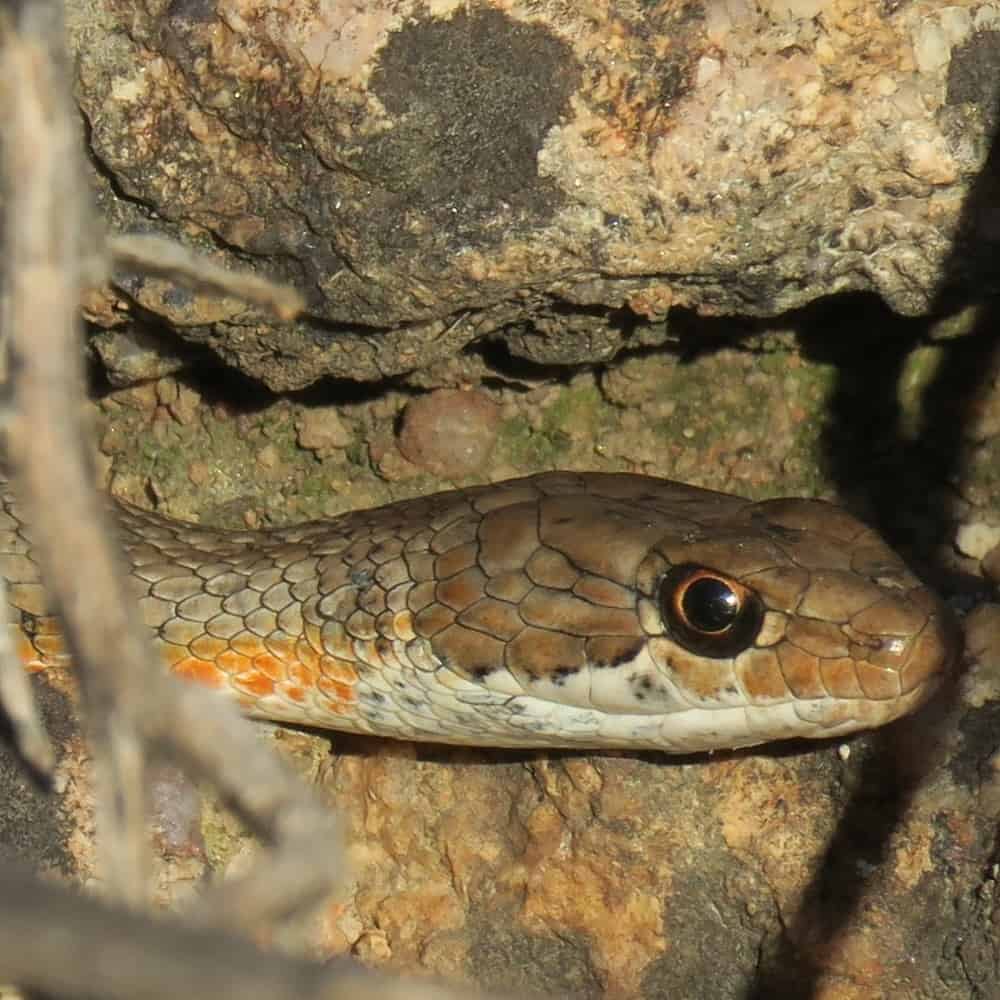
This fast, darting snake lives in western Namibia and western South Africa. They favour dry shrubland and arid semi-desert, and reach up to 100cm. Karoo sand snakes (Psammophis notostictus) move by day, and are able to withstand the hottest African days of air-conned safari vehicles and weirdly distorted elephants appearing in the haziness. They lose no energy in the heat, and can be seen darting around as rapidly as ever.
Karoo sand snakes are mostly pale brown, occasionally with orange patches on their flanks resembling Cheeto dust fingerprints. This is a harmless species, with a very mild venom. The reason Karoo sand snakes cope with scorching weather isn’t just physiological resistance. They’re particular experts at seeking out small parcels of shades, under shrubs, bushes or rocks.
Karoo sand snakes can dart around, then suddenly come to a standstill for several minutes, allowing its rising body heat to escape to the atmosphere. While 90% focused on hunting lizards and scrambling over rocks in pursuit, there’s always 10% at the back of their mind thinking about the next shady bush. Like most snakes, Psammophis notostictus can’t control their body heat, but can sense when it’s rising to dangerous levels.
| 8 | Spotted desert racer |
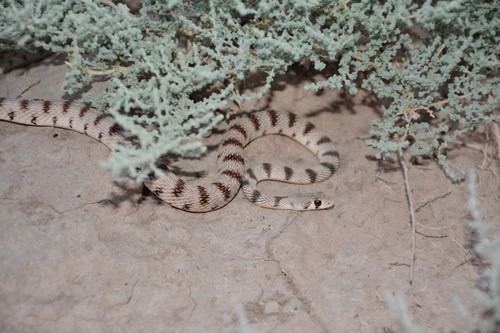
The deserts of Iran are not a hospitable place to live. Temperatures break through 40c with ease, and every hour brings the hot sands and crumbling ruins of old Persian fortifications to sizzling new heights. The snakes that do survive here generally resort to being nocturnal, fumbling around only at night. But not the spotted desert racer. This species measures up to 90cm and has a mild venom. They primarily hunt lizards, which they catch using rapid pursuit.
Places you’ll encounter a spotted desert racer include dry hillsides, semi-deserts, and steppe at up to 2500 metres. This snake has a great ability to which others can’t compare, the ability to slither through burning plains while other snakes cower in their shelters. While other snakes shut down for the day, spotted desert racers stay active much longer.
Spotted desert racers are agile and difficult to catch. They range from Turkey in the west to Kyrgyzstan in the northeast. This is a diurnal (day-faring) snake, and in summer, they might be one of the few creatures you’ll find on the surface full stop.
| 9 | Horseshoe whipsnake |
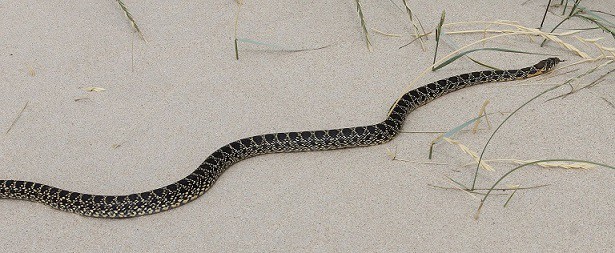
The concept of the siesta was invented in Spain. The Portuguese grabbed most of the Atlantic coast before the Spanish realised the refreshing, cooling effect the ocean had, and hence the interior of Spain is not a pleasant place to be during high summer. Humans aren’t alone in retreating indoors at mid-day and crawling towards the fridge to savour any cool air, but the horseshoe whipsnake doesn’t care at all about hot weather. Of all Spanish snakes, it’s the one most resistant to high temperatures.
Horseshoe whipsnakes measure up to 185cm, and are completely non-venomous. Not only are they diurnal, but they favour open ground. They shun forests, and stick to dry fields, dusty village entrances and tarmac roads sucking up sunlight.
Horseshoe whipsnakes live in a perfect storm for temperatures to burn them to a crisp, yet they cope remarkably well. They can be found slithering freely on hotter days, in full view of tourists. Horseshoe whipsnakes seem to follow the coachwhip formula: they’re fast-moving pursuit predators, with strong eyesight, and a taste for fast-moving lizards.
| 10 | Common keelback |
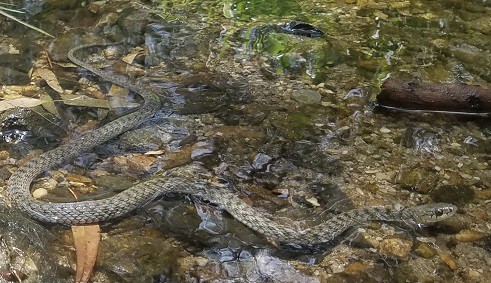
The common keelback lives in marshes, ponds and swamps of Queensland, Australia. They’re a slightly venomous, but harmless species which preys on amphibians such as ornate burrowing frogs, by gathering near where frogs congregate.
Common keelbacks aren’t quite as heat tolerant as a yellow-faced whipsnake, as during the hottest summer spells, they switch from being diurnal (their preference) to nocturnal. However, they have one of the coolest studies conducted on them. A 2012 survey examined the activity of common keelbacks at various temperatures. Hot weather of 35C had no effect on them. They darted around their ponds, hunting for frogs as usual, and ducking far below when their serpent eyes made out the vague shape of a human.
They were highly heat tolerant, yet when temperatures fellow to below 20C, the common keelbacks completely halted. They stopped moving entirely, with no resistance to chilliness.
A common keelback would rapidly die if it tried to live a European adder’s lifestyle, on alpine slopes below cablecars. Alternatively, it would do well if dropped into a Brazilian swamp, if its innate fear of Australian crocodiles carried over to the black caimans patrolling the Amazon. Cool weather might explain why one Queensland marsh which is normally bustling with snakes is suddenly empty of them.
